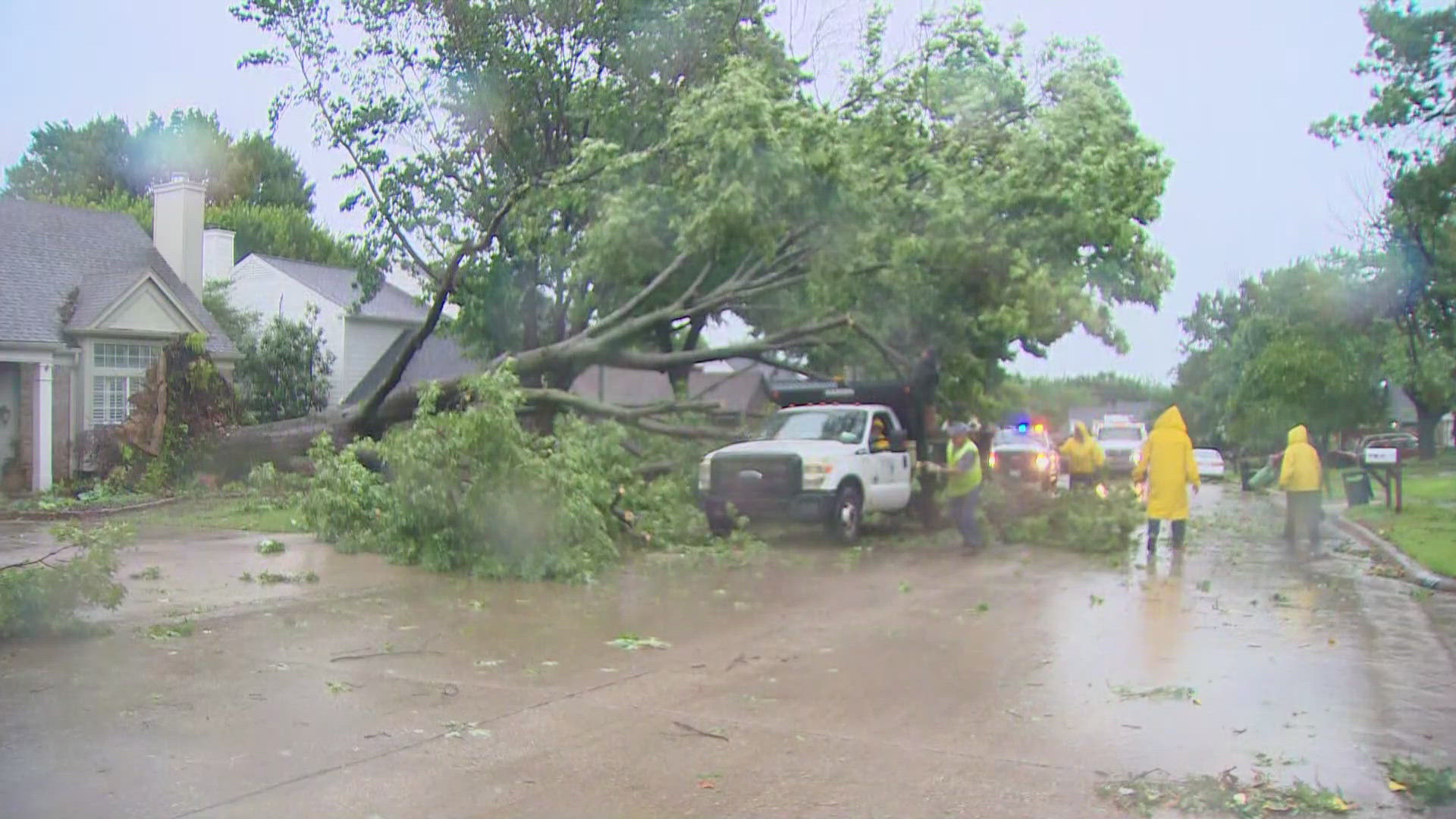DALLAS — Massive storms moved through North Texas after Memorial Day, on May 28, leaving more than half-a-million cubic yards of debris in the city of Dallas.
Monday, Clifton Gillespie, director of the department of sanitation services, provided an update and analysis for the city’s Quality of Life, Arts & Culture Committee.
It was a widespread storm system that impacted the whole city, downing trees and power lines. Oncor called it one of the worst storms in the company’s history.
The day after, May 29, light clean-up began with a limit of 20 cubic yards of debris per household. On June 3, more crews arrived and clean up efforts ramped up with crews working seven days a week. There were more than 200 sanitation staff, 100 contract personnel, 65 brush collection trucks and trailers and 70 garbage trucks
One challenge was, although the city maintained the order of areas for bulky item pick up, the work that normally took a week to complete took up to twice as long. Gillespie also shared that not all households received its communication regarding pickup dates, times and instructions.
Part of the report was a comparison to similar events prior to the May 2024 storms. There was a windstorm in June 2019 that generated 700,000 cubic yards of debris that took three months to clear. That same year, the Preston Hollow tornado in October left 350,000 cubic yards of debris that crews took 85 days to clean up.
With the May 2024 storm, 550,000 cubic yards of debris were scattered across the city and crews completed their first pass in 50 days, ahead of schedule.
“The reality of what happened in some cases is there were some items destroyed in the storm that might not fit in your typical debris category," Gay Donnell Willis, District 13 Councilmember, told Gillespie. "It might have been an above ground pool or a kiddie pool or some other thing a crew may look at and say no, that doesn’t fit the criteria but, to the resident, it was destroyed in the storm so, they think they’re doing the right thing.”
Gillespie did acknowledge challenges with getting communication to all the households the department serves. Right now, it is looking into additional outreach channels like automated phone calls and text messages to ensure families are confident in the process and timeline to clear out debris after the next major storm.
The full report can be read here.

